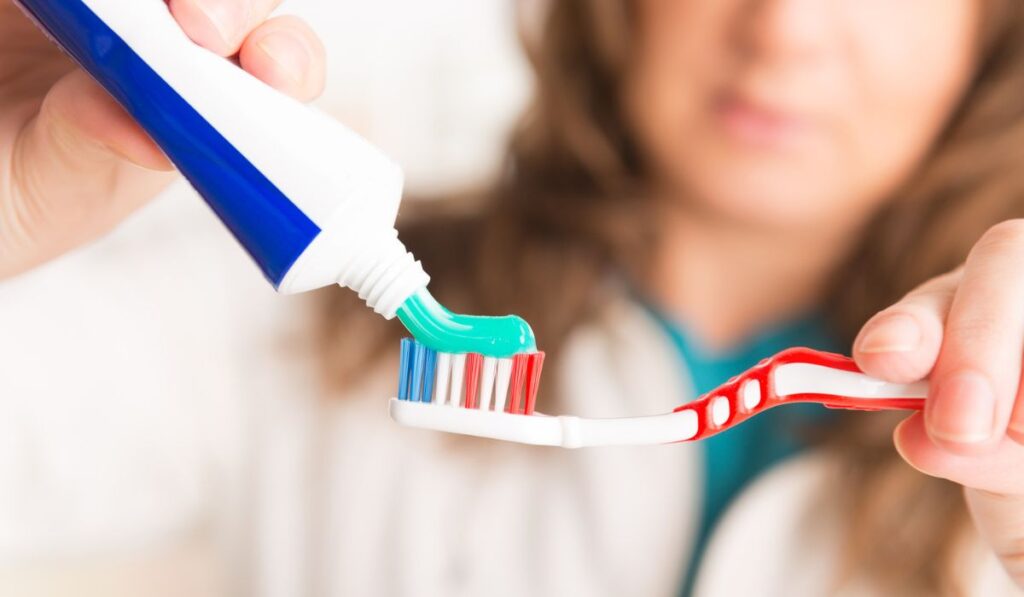There’s no deep science involved in how you shop or use your toothpaste. However, a lot of science goes into how these things are made. And to be blunt, scientists are constantly working to improve the structure and composition of toothpaste. That begs the question: is toothpaste considered a liquid or a solid?
Toothpaste is neither a solid nor a liquid, rather it’s a finely blended mixture of solid particles in a liquid medium. This makes it a colloid substance like milk, where particles of one substance are evenly dispersed into another. Toothpaste is made of mostly water, mixed with various chemicals.
Every year, millions of dollars go into research so you can have toothpaste that cleans your teeth better, tastes better, and maintains its physical structure without compromises. Let’s get started to help you fully understand the physical state of toothpaste and its ingredients.
Is Toothpaste Considered a Liquid or a Solid

Toothpaste is not exclusively a solid, nor is it purely a liquid because it contains many powdered solids and various liquids. Each toothpaste is a stabilized mixture of various liquids like water and fine solid particles like calcium carbonate.
The liquid substances hold everything else in place and work to dissolve stuff like artificial sweeteners and preservatives.
While you could think of toothpaste as a solid, it’s a bit more complicated. For example, when you squeeze the bottom part of the tube, parts of the paste near the walls liquefy. This action allows the solidified parts in the middle of the tube to flow out easily.
Physicists classify a paste as a substance that behaves like a solid until you apply enough pressure to make it flow like a liquid. The scientific lingo for the kind of mojo thing paste does is “the rheological behavior” of toothpaste. It maintains its thickness and viscosity no matter how much pressure you apply, like when squeezing the tube.
What Makes Something a Liquid or a Solid
You say something is a solid if it can hold its shape and has a fixed volume, making it hard to squash. Think of the plastic material of your toothbrush as a solid.
Most solids have their particles closely packed together, so they won’t easily move or slide past each other. However, they have tiny vibrations in their fixed positions.
If you heat a solid enough, the particles gain more energy, their vibrations increase, and they move further apart. The whole thing then melts and becomes a liquid.
A liquid substance also has a fixed volume, but it has no definite shape, and that’s why liquids go into containers of all shapes. The particles in a liquid are not as closely packed as you’d find in a solid, so they can also change position easily. The volume of a liquid only remains fixed due to the forces of attraction between the liquid particles.
Is Toothpaste a Colloid?
Chemists argue that toothpaste is a colloid since it’s a stabilized suspension of granular material in a fluid background. The mixture only becomes significantly disturbed when you put some force, like during brushing, or when it has stayed on the shelf for too long.
What is Toothpaste Made Out Of?

Your toothpaste is carefully formulated to protect your teeth, brighten your smiles, and give you long-lasting fresh breath. Here’s a highlight of the most common ingredients you’ll find in your toothpaste:
Fluoride
Many toothpastes use sodium fluoride to help fight cavities, plaque buildup, and damage from acid. Fluoride has a low risk of toxicity, provided it’s used in small amounts, such as the quantity used in toothpaste.
Humectant Systems
Water makes up about 20 to 42% percent of toothpaste, and it’s what holds everything else together. Since water alone may evaporate over time, toothpaste also contains sugar alcohols to keep it from drying out and maintain its goo-like state.
A Mild Detergent
Many toothpastes use sodium lauryl sulfate (SLS) as a mild detergent to help clean your teeth effectively. While SLS produces that nice foaming effect, studies show it can irritate soft tissues lining the inside of your mouth.
To avoid the stinging sensation it causes and the risk of developing canker sores, leading dentists recommend you switch to ADA-approved toothpaste without SLS.
Abrasives
Minerals like calcium carbonate come in handy to scrub and polish your pearly whites. Other toothpastes use activated charcoal because it has similar abrasive properties, removing surface stains and promoting teeth whitening.
Minty Flavors
When you think of toothpaste flavors that give you that cool, fresh sensation, the closest thing that probably jumps to mind is peppermint. And you’re right. Most toothpaste flavors derived from the mint plant include carvone, menthol, peppermint, and spearmint. Unsurprisingly, some brands also use exotic flavors like pine, anise, and fennel.
Sweeteners
Non-nutritive sweeteners like sodium saccharin help numb the unpleasant taste of other active ingredients used in toothpaste.
Over recent years, toothpaste manufacturers have also used xylitol, a natural sweetener with close to zero calories. It improves the taste of toothpaste, reduces plaque buildup, and prevents the growth of harmful bacteria.
Antibacterial Agents
Triclosan usually goes into toothpaste as an active ingredient with great antibacterial and antifungal properties. While it reduces plaque buildup and gingivitis, dentists warn you should only use triclosan toothpastes in the short term. Triclosan could encourage the development of antibiotic-resistant germs, meaning it can make some bacteria tough enough to resist antibiotic medications.


